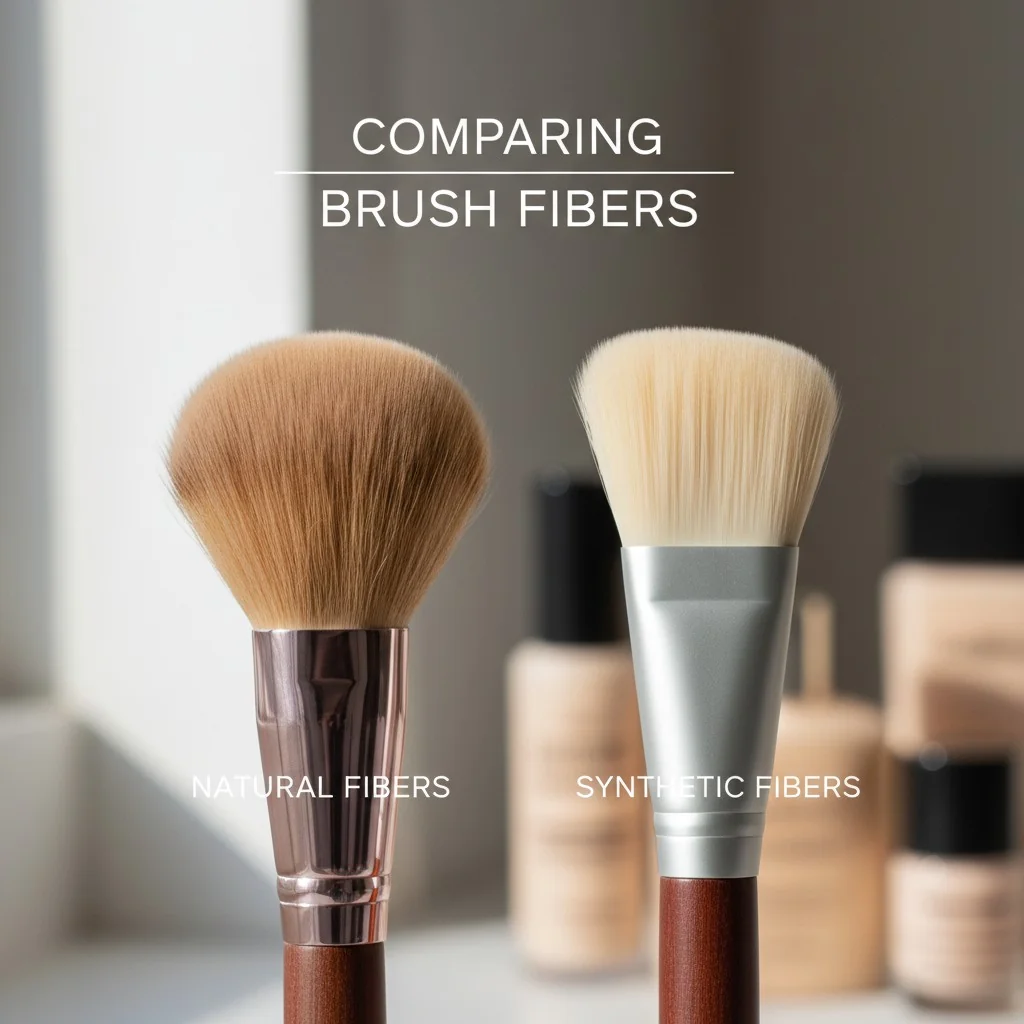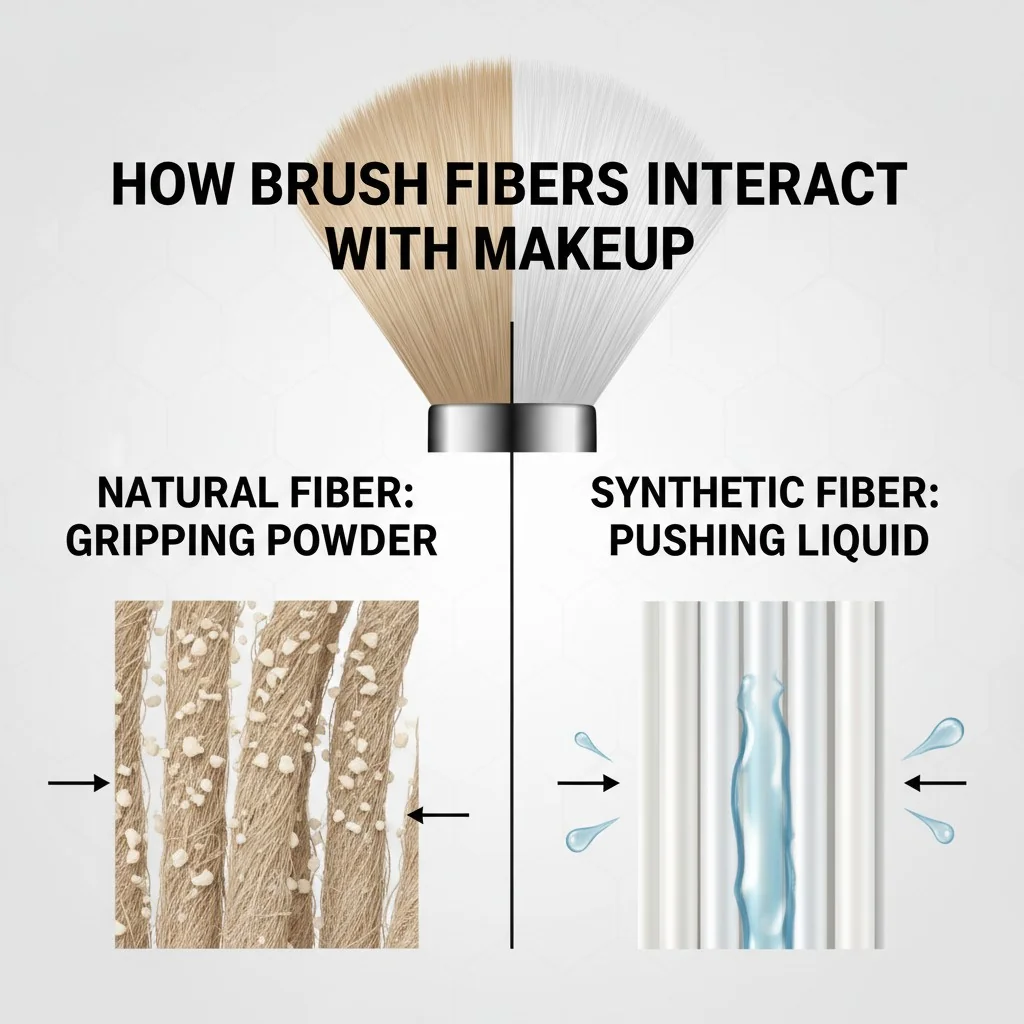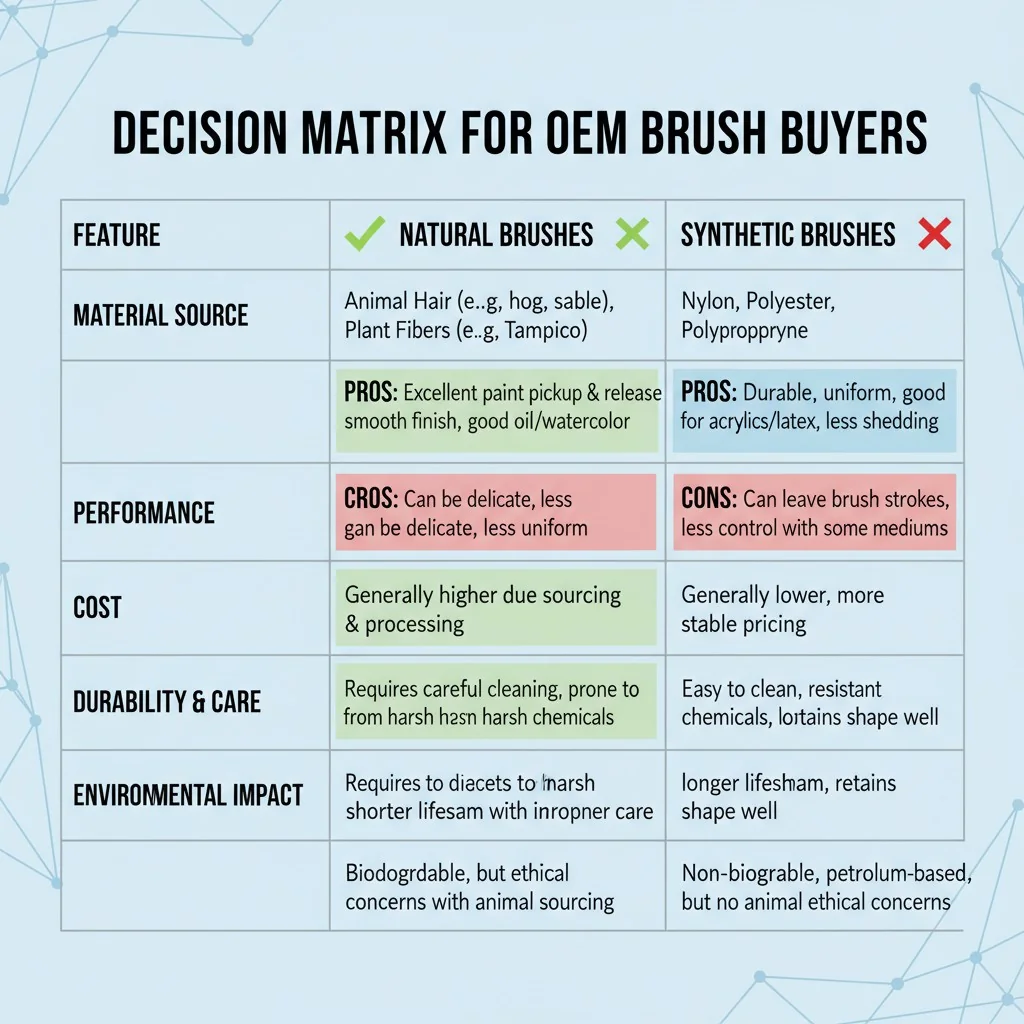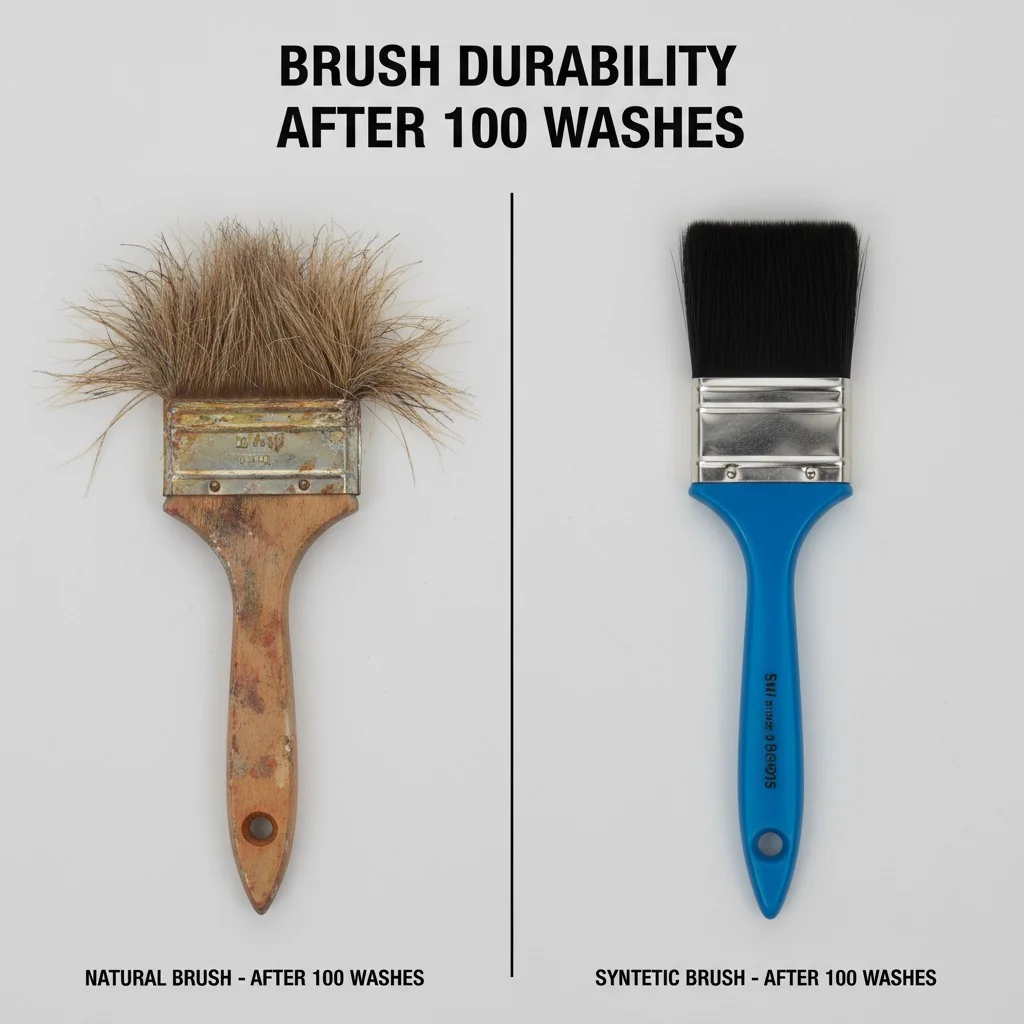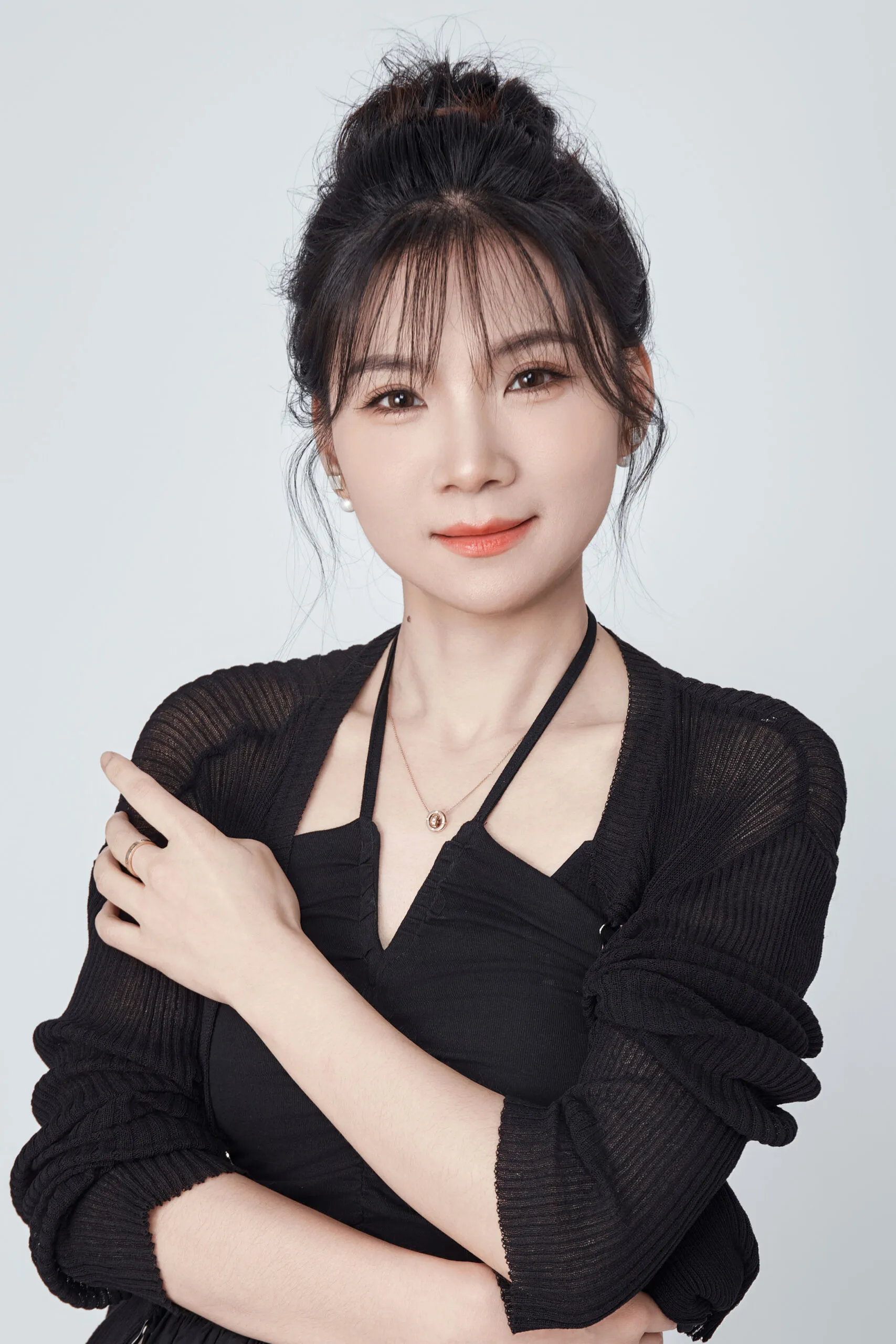Choosing between natural and Synthetic brushes1 feels overwhelming. The wrong choice can waste product and hurt your brand’s reputation. I’ll help you make the right decision with confidence.
Natural brushes2 are best for powders, while synthetic brushes excel with liquids and creams. Choose natural for soft, diffused blending and synthetic for hygienic, easy-to-clean application. Align your choice with your product formulas and cruelty-free policy.
When I first started on the factory floor, the difference between brush fibers was the first thing I learned. It’s the foundation of everything. A beautiful handle means nothing if the bristles don’t work with your customer’s makeup. For brand founders like you, getting this right is not just about performance—it’s about your brand’s promise. Let’s break down this choice so you can source brushes that make your products shine and build trust with your audience.
All synthetic brushes are made from the same type of plastic.False
Synthetic brushes are made from various materials, including Taklon, PBT, and nylon, each with different properties of softness, stiffness, and durability.
Natural hair brushes have microscopic cuticles, similar to human hair.True
These cuticles are what make natural brushes excellent at picking up and distributing powder pigments evenly.
Powder vs. Liquid: The Brush Fiber Rule You Can Trust?
Your new powder blush looks patchy, or your foundation is streaky. It might not be your formula. Your brush choice could be the real problem. Let’s fix that.
The rule is simple: natural hair has tiny scales, or cuticles, that grab and diffuse powders for a soft, blended finish. Synthetic fibers are smooth and non-porous, so they push liquids and creams evenly without soaking up your product.
The Science Behind the Bristles
From my years in manufacturing, I can tell you that the structure of the fiber is everything. It’s not just about feel; it’s about physics.
Natural Hair Fibers: Think of natural hairs like goat, squirrel, or kolinsky. Under a microscope, you’d see they have cuticles, just like our own hair. These cuticles are perfect for picking up fine powder pigments. When you sweep the brush across your skin, the cuticles release the powder gradually and evenly. This is why makeup artists love natural brushes for blending eyeshadow and applying blush. You get that soft, airbrushed look without harsh lines.
Smooth Synthetic Fibers: Now, think about synthetic fibers like PBT or taklon. They are perfectly smooth and have no cuticles. This means they don’t absorb makeup, which is a huge advantage for liquid or cream products like foundation, concealer, or cream blush. Instead of soaking into the bristles, the product sits on top, ready to be applied to the skin. This gives you more coverage with less product waste and makes the brushes much easier to clean.
Of course, there are exceptions. Modern, high-end synthetic fibers are now so soft they can mimic natural hair for applying finishing powders. And a fine-tipped natural kolinsky brush can be great for precise cream eyeliner, but it requires very careful cleaning.
You should always use natural brushes for eyeshadow.False
While natural brushes are excellent for blending powder eyeshadows, synthetic brushes are often better for applying cream or liquid eyeshadows and glitter.
Synthetic brushes are less likely to absorb liquid foundation than natural hair brushes.True
The non-porous surface of synthetic fibers prevents them from soaking up liquid and cream products, leading to less product waste.
Performance, Ethics, and Cost: A Practical Matrix for OEM Buyers?
You need brushes that perform, match your brand’s values, and fit your budget. Trying to balance these three things can be a real headache for brand owners. Here’s a simple matrix to help you decide.
Natural hair gives you amazing powder blending but costs more and raises ethical questions. Synthetic is affordable, vegan-friendly, and perfect for creams, making it a smart, versatile choice for most modern brands.
A Clear Comparison for Brand Founders
As a brand founder, every decision impacts your bottom line and your customer’s perception. I’ve helped hundreds of clients navigate this choice. Let’s put it all in a table to make it clear. This is the same breakdown I use with my clients to ensure they get the perfect brush for their brand.
| Factor | Natural Hair Brushes | Synthetic Fiber Brushes |
|---|---|---|
| Performance | Excellent for picking up and blending powders. Creates soft, diffused looks. | Best for applying liquids and creams. Provides even, streak-free coverage. |
| Product absorption3 | Can absorb some product due to porous cuticles. | Minimal absorption, leading to less product waste. |
| Ethics & Compliance | Requires strict, verifiable sourcing to claim "cruelty-free." Not vegan. | Easily supports "vegan" and "cruelty-free" claims. Simplifies global compliance. |
| Unit Cost | Higher. Premium hair like squirrel or kolinsky is very expensive. | More cost-effective and widely available. |
| Maintenance | Requires gentle cleaning and conditioning to prevent damage. | Very durable. Tolerates frequent, strong sanitation with alcohol. |
For a brand like Emily’s, which values aesthetics and cruelty-free materials, high-quality synthetic fibers are often the best path. They allow her to deliver performance and align with her brand’s ethical promises without the sourcing headaches and higher costs of natural hair.
Natural brushes are always more expensive than synthetic brushes.True
The cost of sourcing and processing animal hair makes natural brushes consistently more expensive than their synthetic counterparts, especially for high-grade hair.
Cruelty-free' and 'vegan' mean the same thing for makeup brushes.False
'Cruelty-free' means no animal testing occurred, but the brush could still contain animal hair. 'Vegan' means the brush contains no animal-derived products at all.
Durability and Hygiene: What Do 100 Wash Cycles Reveal?
Your brushes are shedding or losing their shape after just a few cleanings. This is a quality issue that can damage your brand’s reputation. The solution is choosing fibers designed for durability.
Our factory tests show that synthetic fibers hold up incredibly well to repeated, harsh cleaning. Natural hair is more delicate and needs gentle care to prevent it from becoming brittle and breaking.
The Factory QC Perspective
In our factory, we don’t just make brushes; we test them rigorously. One of our standard tests is the wash cycle test. We see how brushes hold up to the kind of use they’ll get in the real world, especially in professional settings.
The Synthetic Advantage in High-Sanitation Environments:
For makeup artists or retail store testers, brushes need to be sanitized constantly, often with alcohol-based sprays. Our tests confirm that synthetic fibers are the clear winner here. They can be cleaned with strong surfactants and alcohol over and over with very little deformation or bristle loss. This low maintenance and high durability reduce long-term costs and minimize microbiological risks. It’s why I always recommend synthetic-only sets for these high-use environments.
Proper Care for Natural Hair Brushes:
Natural hair, on the other hand, needs to be treated like the hair on your head. Harsh alcohol cleaners will strip its natural oils, making the bristles dry, brittle, and prone to breakage. They require gentle, conditioning brush cleansers and more time to dry properly. While a high-quality natural brush can last for years with proper care, it’s less forgiving of rough handling.
You can clean all makeup brushes with dish soap and water.False
While this works for synthetic brushes, harsh soaps can damage delicate natural hair fibers. They require milder, conditioning cleansers to maintain their softness and shape.
Synthetic brushes dry faster than natural hair brushes.True
Because synthetic fibers are non-porous, they don't absorb water, which allows them to dry much more quickly after washing.
Market Signals: Why Are Vegan Brushes Winning Shelf Space?
You’re planning your next product launch and deciding on your brush collection. Ignoring major market trends could mean leaving money on the table. You need to know why Vegan brushes4 are becoming the new standard.
The global vegan cosmetics market is growing fast and is expected to continue expanding through 2032. Consumers and big retailers are demanding cruelty-free products, making synthetic brushes the safest and smartest choice for brands looking to grow.
Following the Consumer and the Retailer
The shift toward synthetic brushes isn’t just about performance; it’s a business decision driven by market demand. As a partner to brands, I see these trends directly from my clients and the retailers they want to work with.
The Rise of the Conscious Consumer:
Today’s beauty buyer is more informed and values-driven than ever before. For many, "vegan" and "cruelty-free" are non-negotiable. Market reports consistently show a strong growth trajectory for vegan cosmetics. By choosing synthetic fibers, you immediately connect with this large and growing audience. It’s a powerful way to build a brand story that resonates. Offering vegan brushes isn’t a niche strategy anymore; it’s a mainstream expectation.
How Retailers Are Driving the Trend:
If your goal is to get your products into major retail stores, your sourcing choices matter. Many large retailers have their own clean beauty standards and require clear documentation for any claims you make. Proving a "cruelty-free" claim for natural hair requires a complicated and often expensive audit of your entire supply chain. With synthetic brushes, the path to compliance is simple. This is a huge advantage for independent brands who need to be agile and efficient.
The demand for vegan beauty products is a short-term trend.False
Market research firms project sustained, strong compound annual growth (CAGR) for the global vegan cosmetics market well into the next decade, indicating a long-term shift in consumer behavior.
Only vegan brands need to offer synthetic brushes.True
While essential for vegan brands, any brand can benefit. Offering synthetic brushes broadens your customer base and simplifies entry into retailers with strict clean and cruelty-free standards.
FAQs That Stop the Search
Are natural brushes better than synthetic?
It depends on the product. Natural brushes are better for blending powders softly. Synthetic brushes are better for applying liquids and creams hygienically and without streaks.
Do synthetic brushes work with powders?
Yes. Modern, high-quality synthetic brushes work very well, especially for applying finishing powders or for everyday eyeshadow looks. However, many artists still prefer natural hair for the ultimate soft blend.
Which brushes are cruelty-free?
Synthetic brushes are the safest bet for being cruelty-free and vegan. Natural hair brushes can be "cruelty-free" if the hair is sourced ethically without harming the animal, but this requires strict verification and they are never vegan.
Which is easier to clean?
Synthetic brushes are much easier to clean. Their non-porous fibers don’t hold onto product and can handle frequent, strong cleaning solutions.
Do natural brushes shed more?
Not necessarily. Shedding is a sign of poor quality control, not the fiber type. A well-made natural brush with a properly crimped ferrule will be just as durable as a synthetic one.
What’s best for sensitive skin?
Either ultra-soft synthetic brushes or very high-grade natural hair (like squirrel) can work. Synthetic brushes have the added benefit of being hypoallergenic and reducing concerns about animal-related allergens.
Conclusion: Choose by Formula Mix and Brand Positioning
Your final choice depends on your products and your brand. Match the fiber to your formulas and your brand’s core values for guaranteed success.
References
-
Learn why synthetic brushes are ideal for liquid products and their hygienic benefits. ↩
-
Explore the advantages of natural brushes for makeup application, especially for powders. ↩
-
Discover how different brush materials affect product absorption and application efficiency. ↩
-
Explore the growing trend of vegan brushes and their appeal to conscious consumers. ↩
